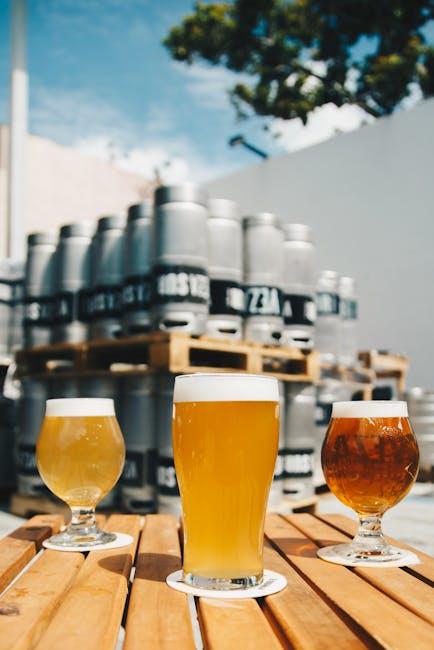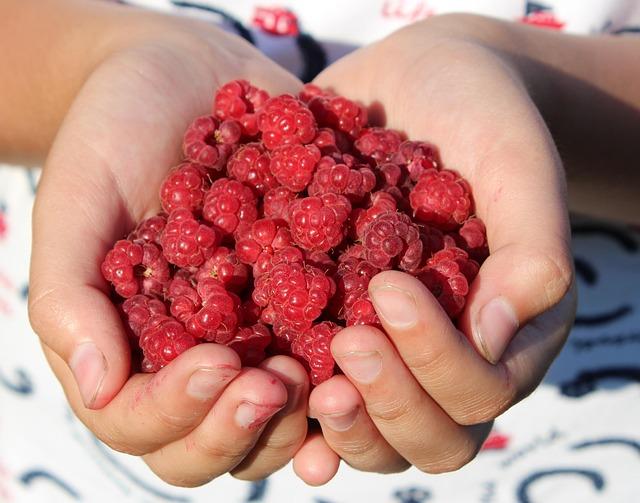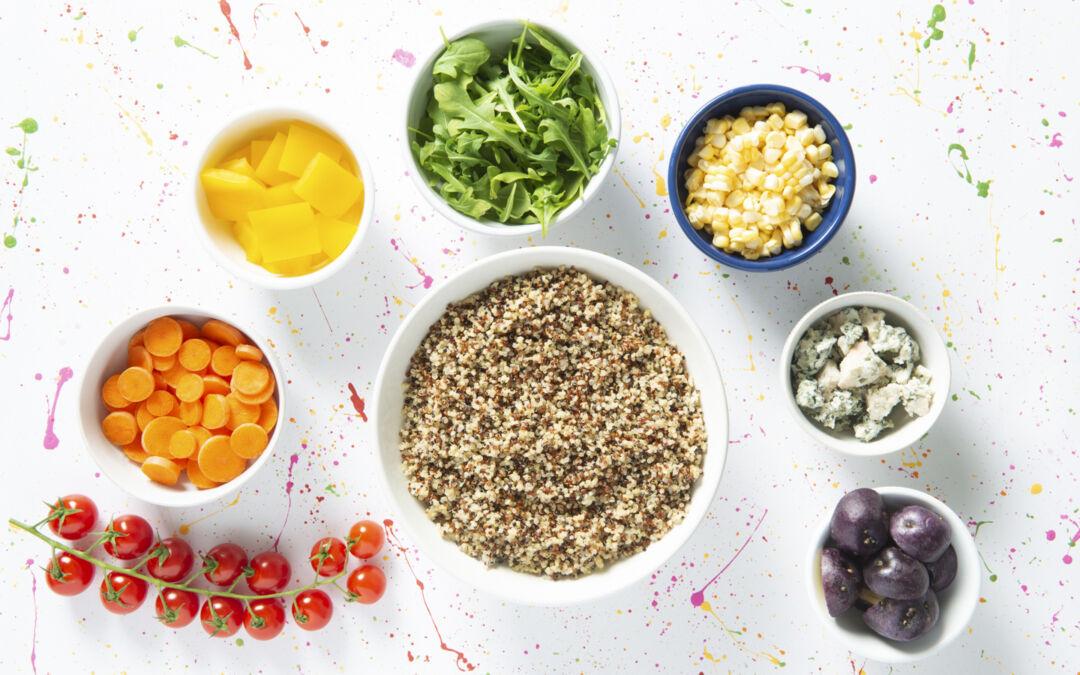Table of Contents
- Exploring the Rich History of Japanese Kombucha
- The Art of Brewing Kombucha: Traditional Japanese Techniques
- Health Benefits of Kombucha and its Cultural Significance in Japan
- Choosing the Right Ingredients for Authentic Japanese Kombucha
- Savoring the Unique Flavors: Pairing and Enjoying Japanese Kombucha
- Q&A
- The Conclusion
Exploring the Rich History of Japanese Kombucha
The origins of kombucha can be traced back over two thousand years, with its roots commonly believed to lie in Northeast China before making its way to Japan. This fermented tea beverage, often referred to as the “Tea of Immortality,” has a rich history intertwined with various cultural practices. Japanese kombucha, while sharing similarities with its Chinese predecessor, has evolved uniquely through regional adaptations and preferences in taste, aroma, and production methods.
In Japan, the brewing process has become an art form, reflecting the country’s deep reverence for nature and harmony. Traditional Japanese kombucha is characterized by its use of green tea, which enhances its health benefits and imparts a delicate flavor profile. Many artisans infuse their brews with seasonal ingredients, such as
- Ume (Japanese plum) for a fruity twist
- Yuzu (Japanese citrus) to brighten the palate
- Matcha for an extra earthy and vibrant touch
This fusion of flavors not only caters to the taste buds but also exemplifies the Japanese philosophy of appreciating the beauty of the seasons in their food and drink.
Historically, kombucha was not merely enjoyed as a beverage; it played a significant role in Japanese wellness traditions. The drink was often linked to self-care rituals, reflecting the holistic approach of Japanese culture. On a broader scale, the introduction of kombucha in the West in the 1990s has sparked a resurgence of interest in traditional brewing methods, reviving interest in artisanal Japanese kombucha. Today, new generations continue to explore and innovate, bringing the essence of this ancient tradition into contemporary lifestyles.


The Art of Brewing Kombucha: Traditional Japanese Techniques
The art of brewing kombucha reflects a deep cultural heritage, particularly through traditional Japanese techniques that emphasize both precision and patience. These methods prioritize natural ingredients and the cultivation of beneficial bacteria and yeasts. In Japan, brewing kombucha often begins with carefully selected tea leaves, typically green or black tea, which are then combined with high-quality sugar. The balance of these ingredients is crucial, as the quality of the tea directly impacts the flavor and health benefits of the final product.
One hallmark of Japanese brewing is the meticulous attention paid to the fermentation environment. Home brewers often prefer ceramic vessels over glass or metal, as ceramics allow for a more stable temperature and humidity level—two critical factors during fermentation. Furthermore, natural filtration processes, such as using spring or mineral water, are standard practice. This enhances the natural flavors and reduces unwanted contaminants that could inhibit the fermentation process. Brews are often flavored with traditional elements like yuzu, matcha, or shiso, infusing the final product with unique tastes that reflect the essence of Japanese cuisine.
After fermentation, the kombucha undergoes a secondary fermentation phase, which carefully enhances carbonation and flavor. This process can be enriched by adding fruits, herbs, or spices, creating a diverse range of profiles. To illustrate different flavor combinations, consider the following table:
| Flavor Profile | Main Ingredients | Unique Notes |
|---|---|---|
| Yuzu Citrus | Yuzu juice, green tea | Bright, refreshing taste |
| Matcha Bliss | Matcha powder, black tea | Earthy, smooth finish |
| Herbal Shiso | Shiso leaves, oolong tea | Unique aromatic flavor |
the synthesis of tradition and technique in Japanese kombucha brewing showcases a unique approach that not only preserves health benefits but also celebrates creative expression. This artisanal craft, rooted in patience and precision, invites enthusiasts worldwide to explore the delicate balance of flavors and wellness that comes from mastering the art of brewing kombucha.


Health Benefits of Kombucha and its Cultural Significance in Japan
Kombucha, often referred to as a mysterious elixir, is a fermented tea that has captivated health enthusiasts worldwide, particularly in Japan, where its roots run deep in tradition. This sparkling beverage, renowned for its unique flavor profile, offers a myriad of health benefits that contribute to its rising popularity. Among its countless attributes, kombucha is celebrated for its potential to aid digestion, thanks to the presence of probiotics that foster a healthy gut microbiome. Additionally, the drink is rich in antioxidants, which help combat oxidative stress, and it is believed to possess detoxifying properties that may support liver health.
Beyond its health benefits, kombucha carries significant cultural importance in Japan, where it is often referred to as the “Tea of Immortality.” This label reflects the beverage’s long-standing history and the belief in its vitality-boosting properties. Traditional Japanese brewing methods involve meticulous attention to detail, combining green tea with sugar and a SCOBY (Symbiotic Culture of Bacteria and Yeast), creating a community-driven ritual that emphasizes both craftsmanship and communal bonding. In many households, brewing kombucha is not merely an act of preparation but a cherished tradition passed down through generations, serving as a symbol of health and wellbeing.
Moreover, the ritualistic nature of consuming kombucha in Japan often intertwines with social experiences. In contemporary culture, you’ll find kombucha served in cozy cafés alongside other artisanal beverages, promoting a lifestyle centered on wellness and mindfulness. As awareness of gut health and sustainable living grows, the drink has transitioned from a beverage of the past to a trendy health food, prompting many to explore its benefits. With kombucha finding its way onto restaurant menus and store shelves, it embodies a harmonious blend of ancient Japanese customs and modern health trends, making it not just a drink, but a bridge connecting the past with the present.


Choosing the Right Ingredients for Authentic Japanese Kombucha
When embarking on your journey to brew authentic Japanese kombucha, the selection of ingredients plays a critical role in the final flavor and quality of your beverage. The essence of kombucha lies in its fermentation process, which is initiated by a symbiotic culture of bacteria and yeast (SCOBY). To create a truly authentic experience, sourcing high-quality tea leaves is essential. Japanese varieties like sencha, gyokuro, and bancha are popular choices, each bringing unique flavor profiles and health benefits. The delicate balance of these teas can enhance your kombucha’s taste, making it both refreshing and invigorating. Sugar is another crucial ingredient that cannot be overlooked. As the SCOBY ferments the tea, it consumes the sugar, producing the characteristic tangy flavor of kombucha. Opt for organic cane sugar or raw sugar, as they provide better fermentation compared to white refined sugars. Additionally, the choice of sweetener can influence the depth of flavor in your brew. Consider experimenting with alternatives like honey or agave syrup for variations. Remember, the quality of sugar directly impacts the fermentation process, so always select the best. the addition of flavoring agents can elevate your kombucha to new heights. Authentic Japanese kombucha is often enhanced with ingredients such as yuzu, matcha, or shiso leaves. These natural enhancers not only impart delightful flavors but also contribute various health properties. Here are a few suggestions for creating aromatic and delicious blends:| Flavoring Agent | Notes |
|---|---|
| Yuzu | Citrusy with a floral aroma, perfect for a refreshing kick. |
| Matcha | Rich in antioxidants, it adds depth and a vibrant color. |
| Shiso Leaves | Provides a unique minty and herbal flavor, enhancing freshness. |


Savoring the Unique Flavors: Pairing and Enjoying Japanese Kombucha
Exploring the world of Japanese kombucha unveils a fascinating array of flavors that can be delightfully paired with various foods. The essence of these beverages lies in their unique ingredients, often including green tea, yuzu, and ginger, which impart a refreshing and zesty character. When considering food pairings, think about contrasts and complements. For instance, a citrusy yuzu kombucha pairs beautifully with dishes that feature light proteins such as sushi or grilled chicken, enhancing their delicate flavors while cutting through any richness.
For those who prefer a subtler flavor profile, a plain green tea kombucha serves as an excellent base for culinary experimentation. When accompanied by earthy dishes like miso soup, soba noodles, or even a simple vegetable tempura, the herbal notes of the kombucha accentuate the umami flavors of the food. Additionally, experimenting with garnishes can elevate your experience. Consider adding fresh herbs like mint or basil to your kombucha for a refreshing twist that harmonizes with the meal.
Imagine a cozy gathering where different kombucha flavors are present alongside a charcuterie spread. Here, a table showcasing kombucha, complemented by select cheeses and fruits, can enhance the tasting experience. Below is a simple table to visualize unique flavor pairings:
| Kombucha Flavor | Ideal Pairings |
|---|---|
| Yuzu | Sushi, Grilled chicken |
| Green Tea | Miso soup, Soba noodles |
| Ginger | Spicy dishes, Tempura |
| Lavender | Cheese platter, Baked goods |
